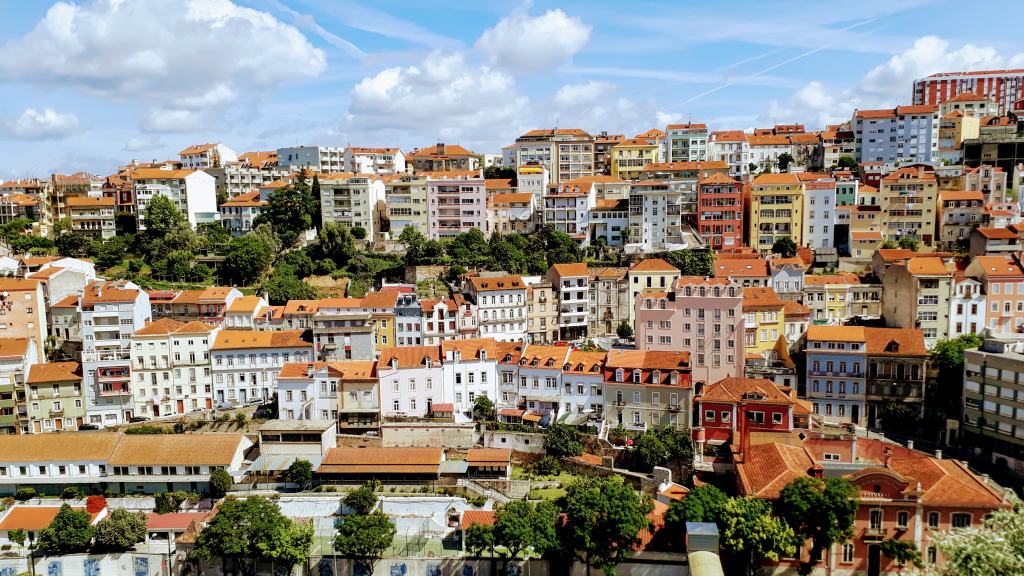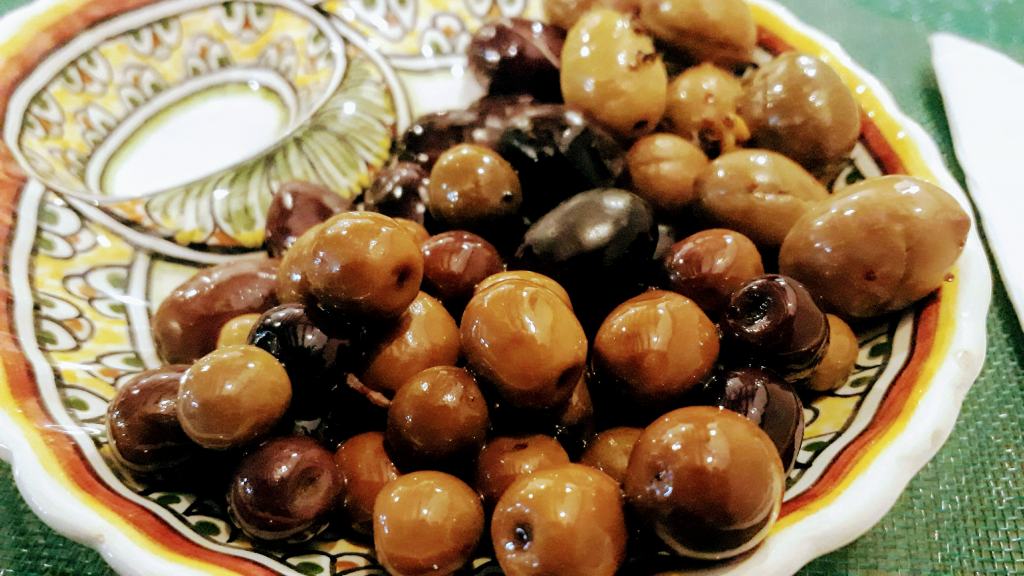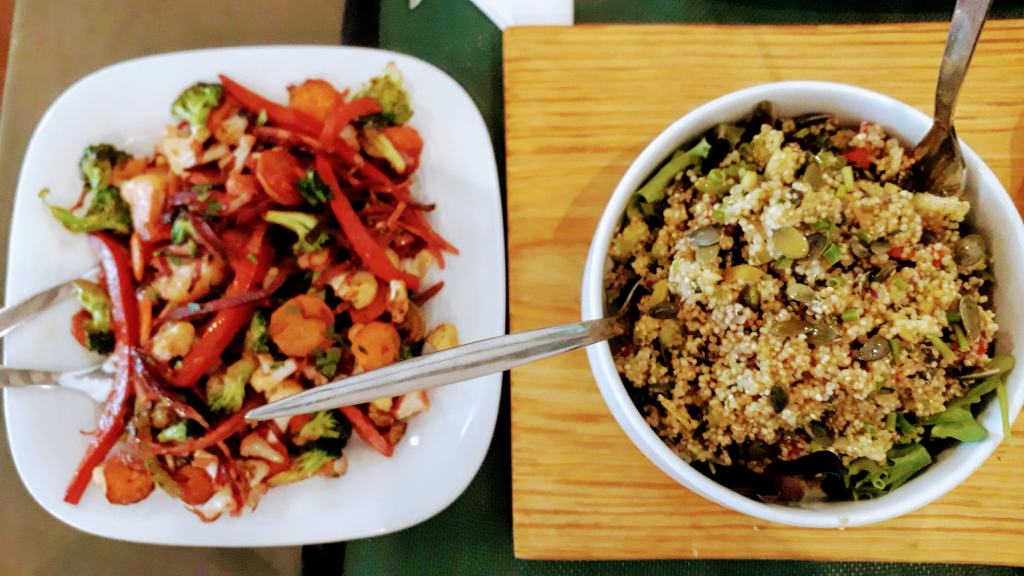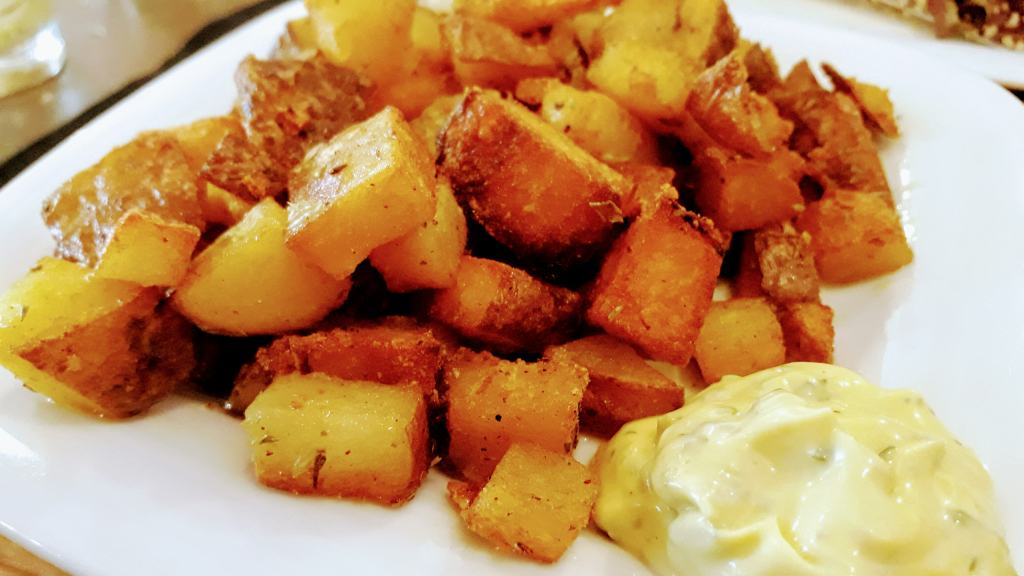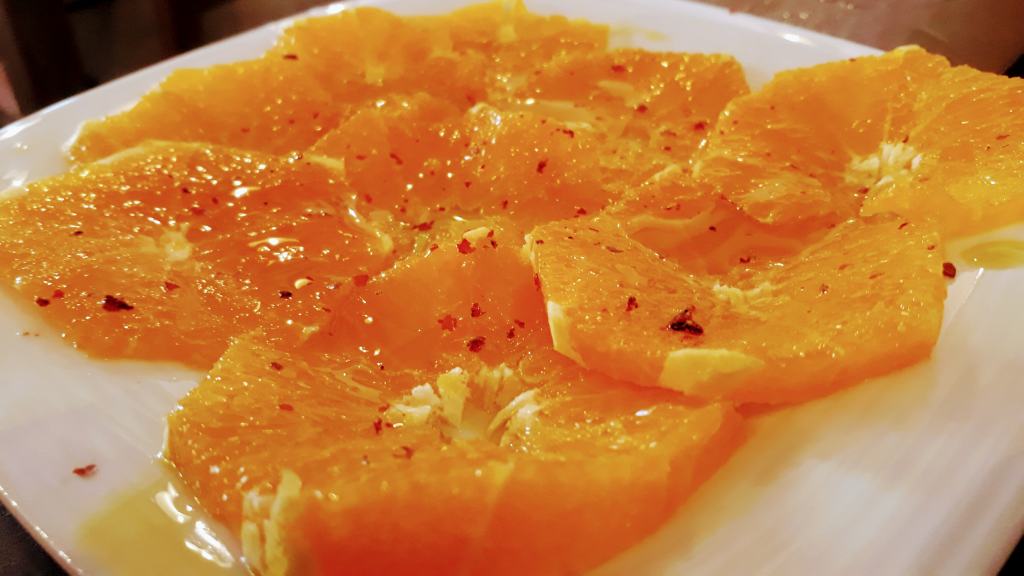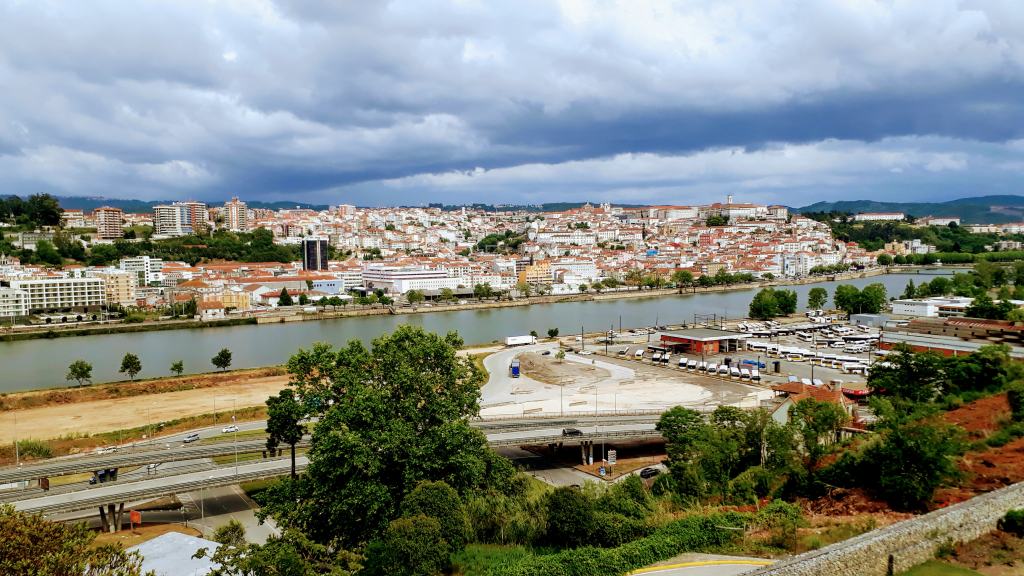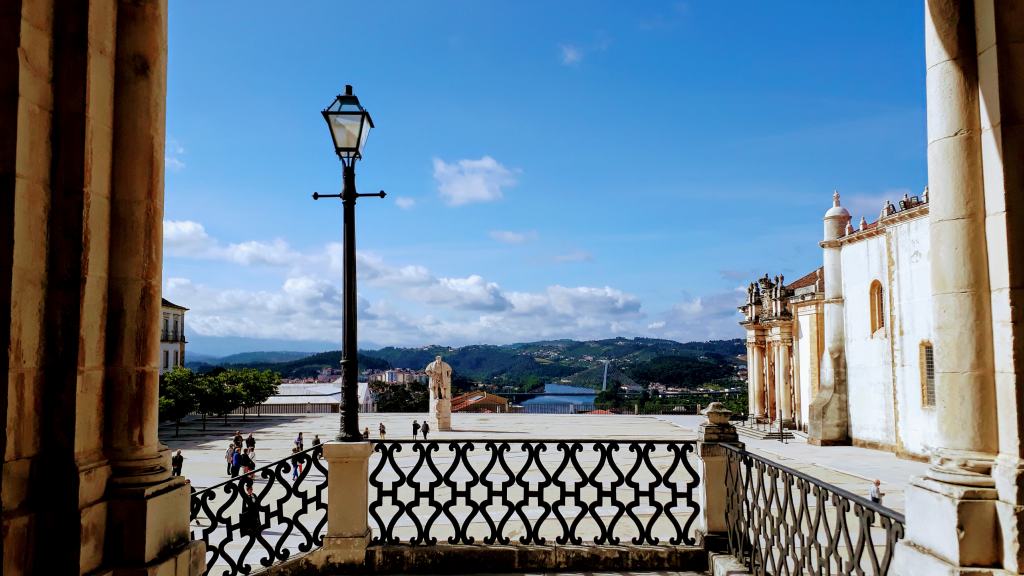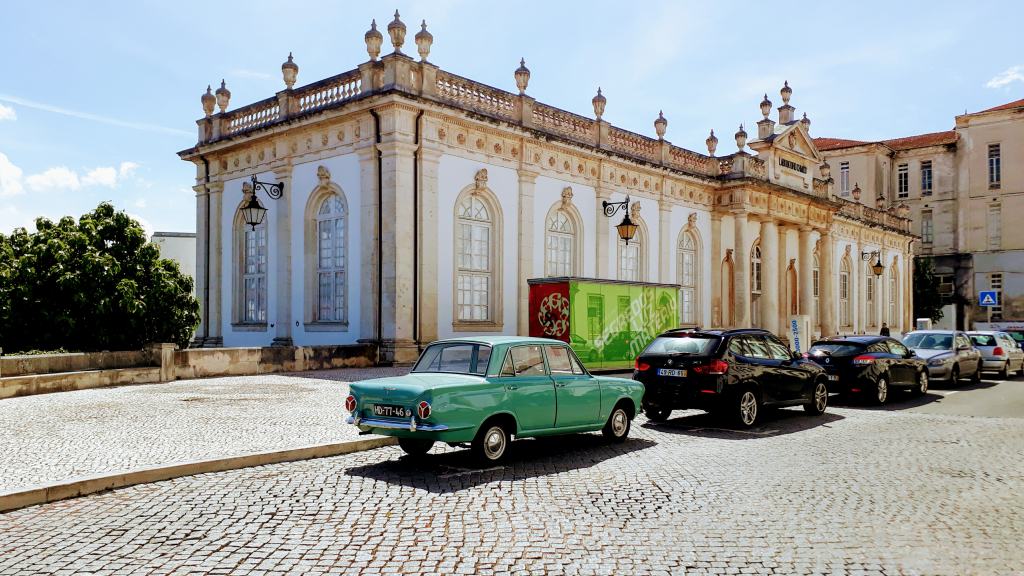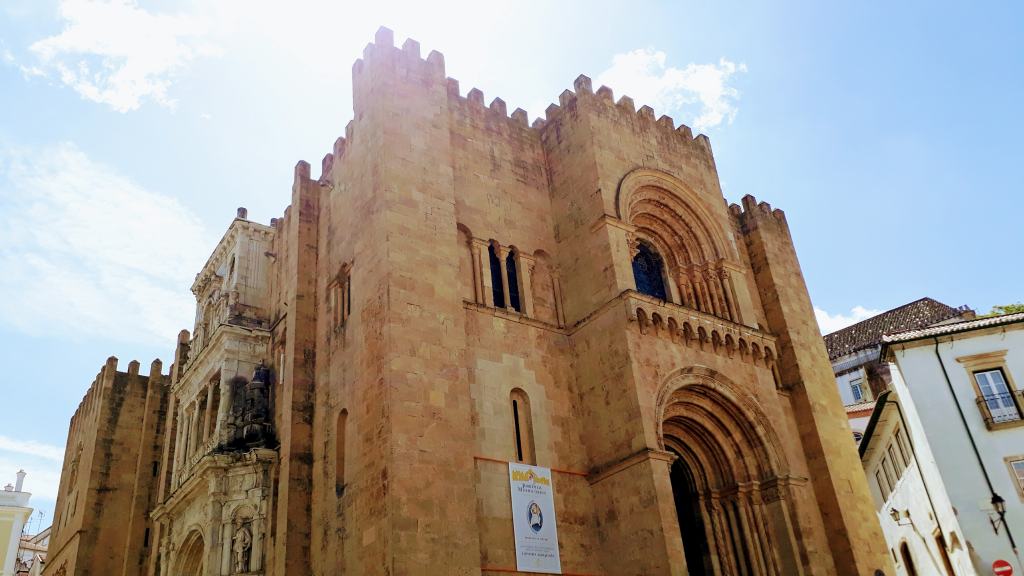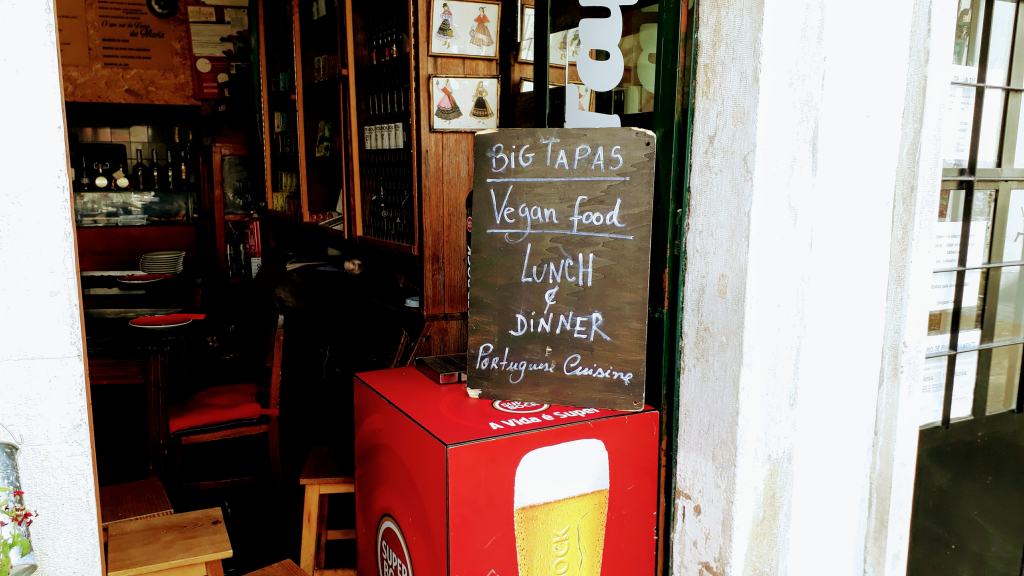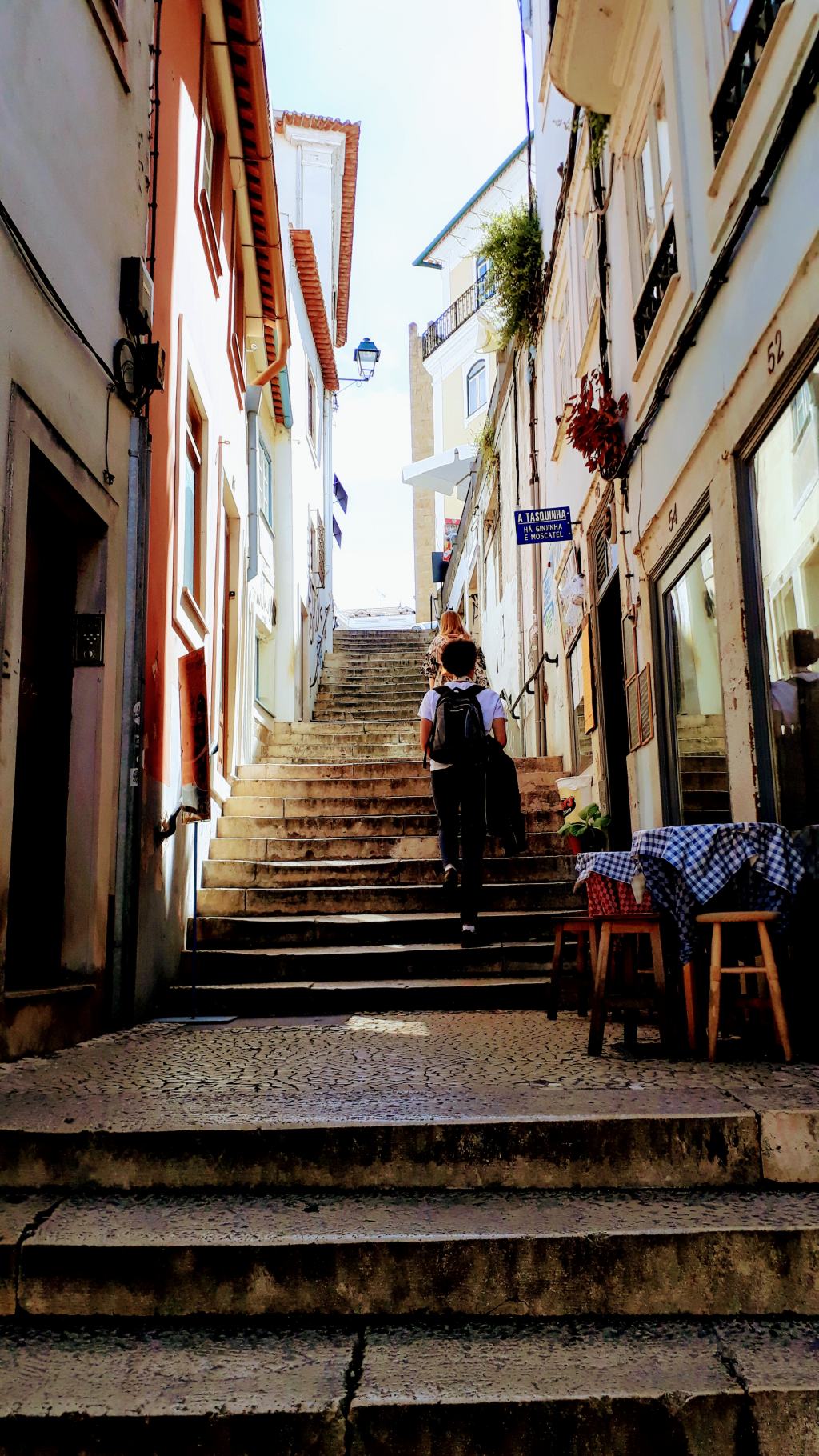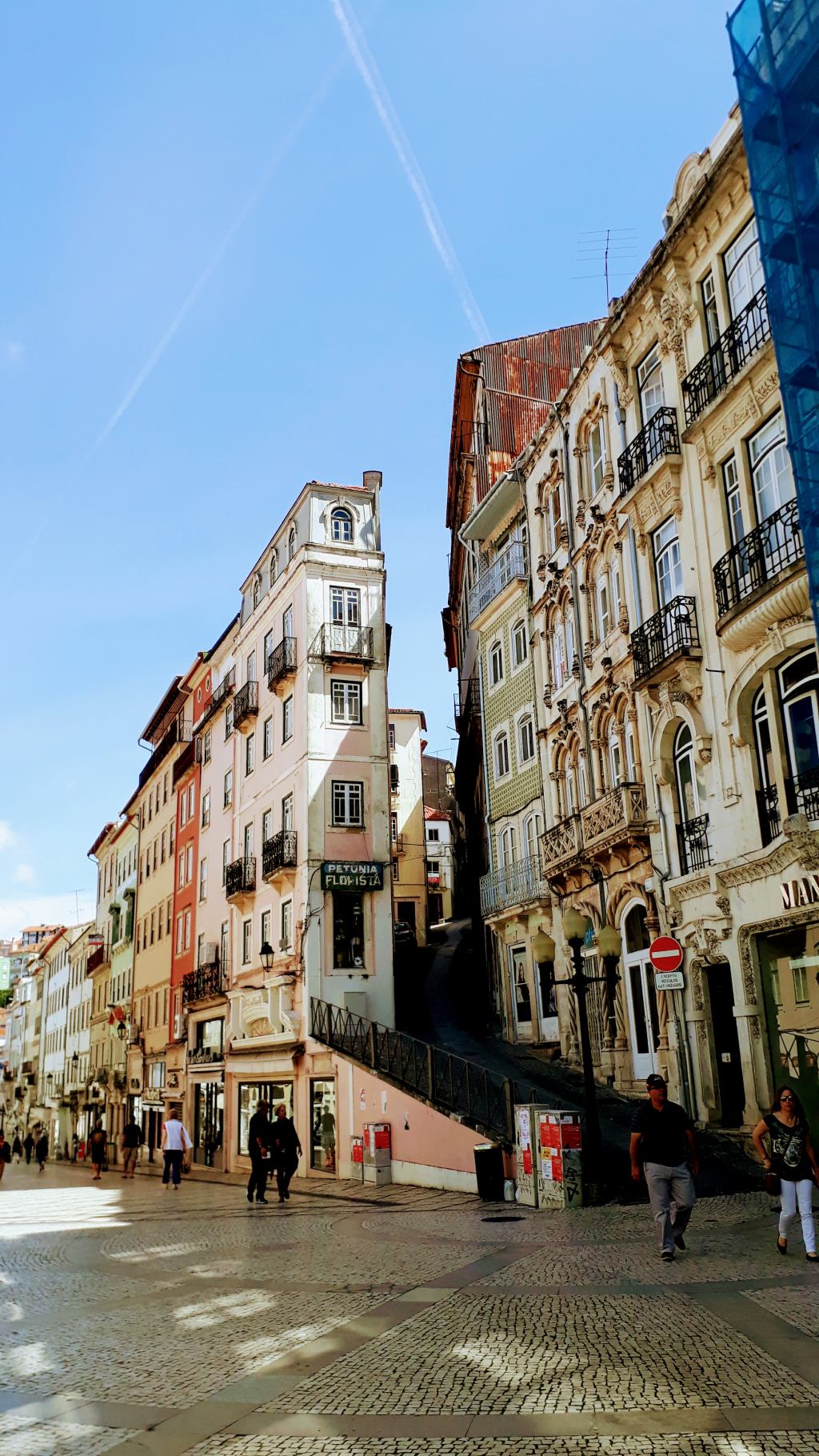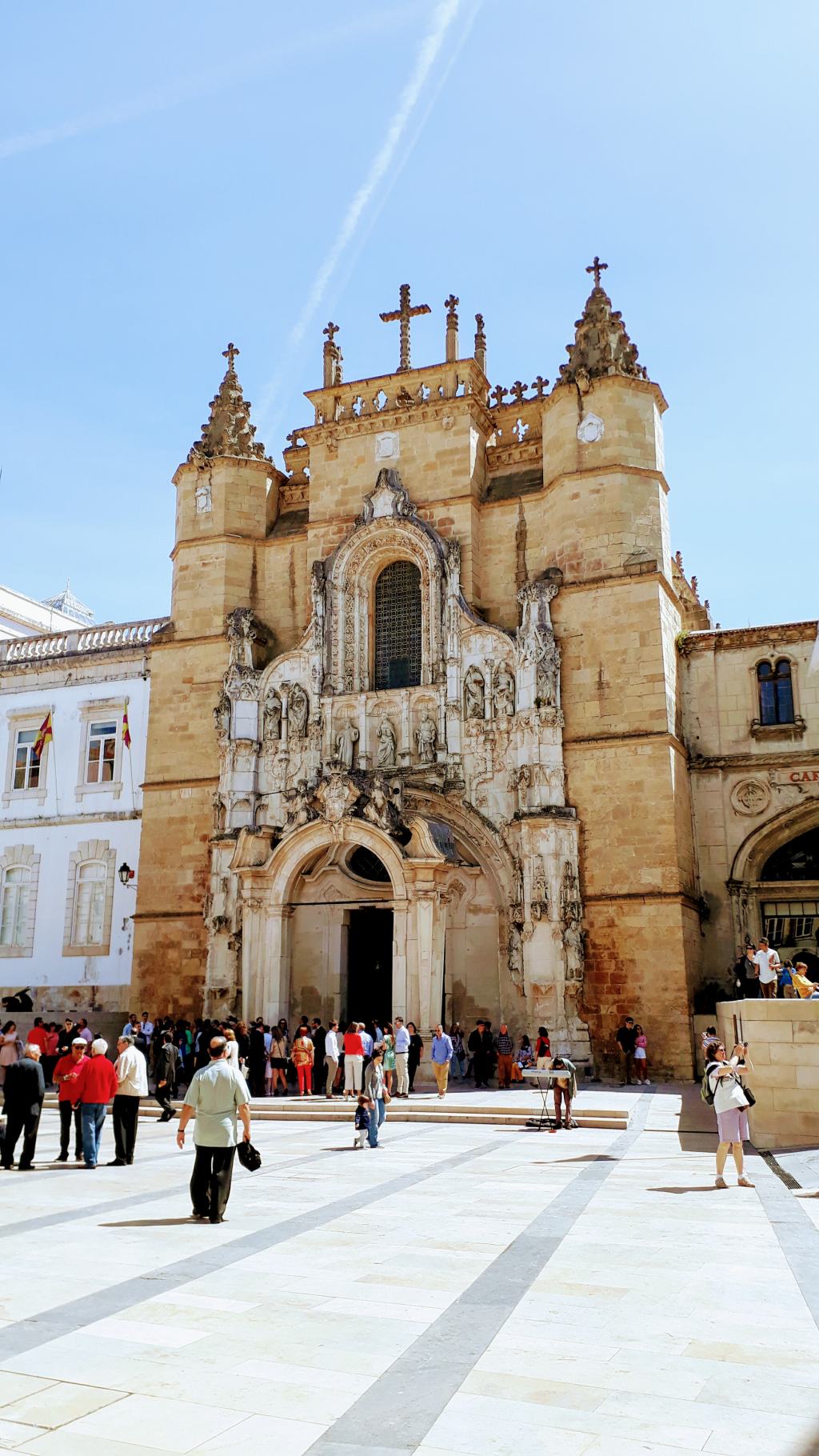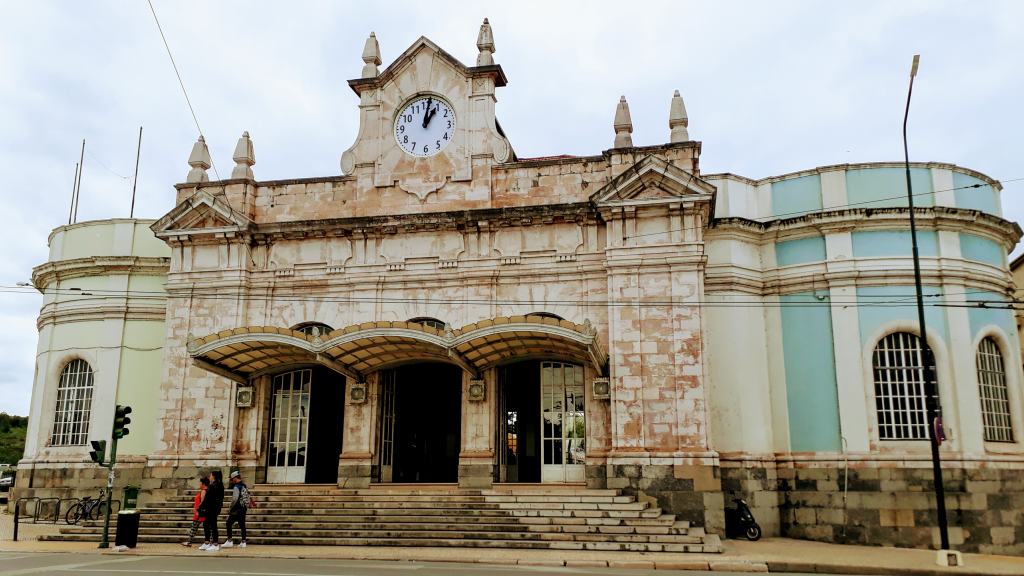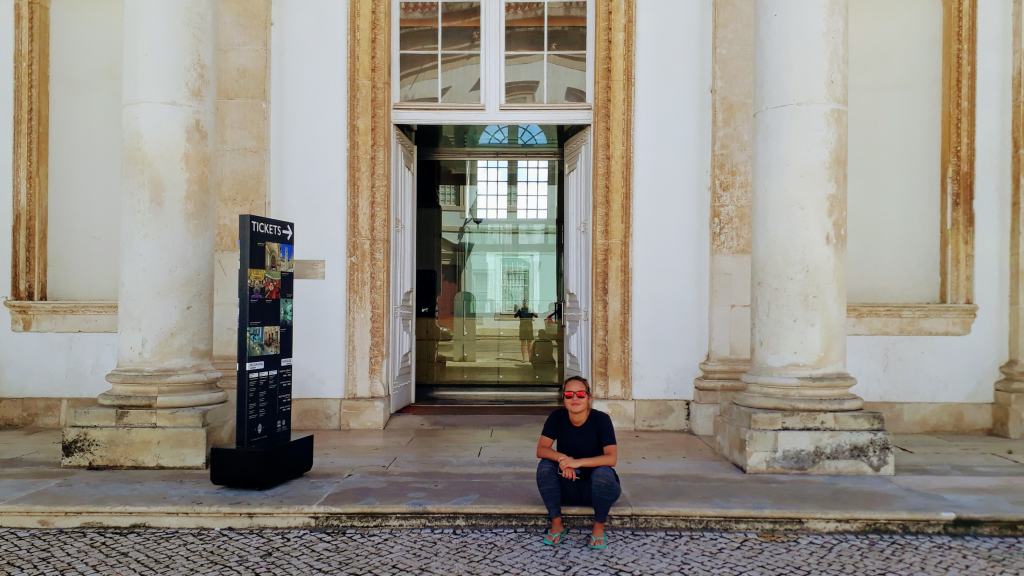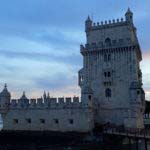The university town of Coimbra is the largest city of Região Centro. With the University of Coimbra founded in 1290, it is home to one of the oldest universities in Europe, which was declared World Cultural Heritage by UNESCO in 2013. The Portuguese capital of culture 2003 was even from 1139 to 1256 the second capital of the country, shortly after Guimarães.

We started our visit at the vegan-friendly “Taberna do Azeite” Passeite. If you love olives and the extracted oil, this is the right place! Passeite is in fact also the name of the olive oil produced by the operators themselves Guilherme and Marije, which they sell exclusively in this tavern and the Netherlands. Besides Portuguese olive oil and olives there’s plenty of other snacks. Questions about the production and properties of the oil and olives are answered passionately by the friendly owners.
As the weather got uncomfortable, we crawled into the shopping center Fórum Coimbra, which is west of Rio Mondego, opposite the old town. With a length of 234 kilometers, the Mondego River is the longest river that flows exclusively through Portugal. From the terraces of Fórum Coimbra you have a nice view of the river and Coimbra. We decided to explore the city the next morning and rather watch a few episodes of our current series in the car bed.
So the next day we plunged in Coimbra’s historic center and started – how could it be otherwise – of course at the university, which it is at the highest point of the city. Since its founding in 1290 by the Portuguese King Dionysius (Dom Dinis), it has changed several times the location between Coimbra and Lisbon, until it was finally settled in Coimbra by King John III in 1537. In 1728, the extensive and richly ornamented university library Biblioteca Joanina was completed, which is considered one of the most spectacular libraries in the world. Today, the University of Coimbra has about 22,000 students and consists of eight faculties.
We made a short detour to Portugal’s largest botanical garden with old, exotic giant trees and tropical houses from the 18th century and the Praça da República, then go back up to the old town. There we passed the Museu da Ciência to the new Cathedral Sé Nova de Coimbra, dating from the 16th century.
Right next to it is the Museu Nacional de Machado de Castro, which is considered a highlight of Central Portugal. It’s built over the Roman forum, the remains of which can be seen and cover several levels. Part of the visit leads down to the vaulted, spooky and immensely atmospheric galleries of the cryptoportico that allowed the forum to be level on such a hilly spot.
A few steps away is the Romanesque cathedral Sé Velha from the middle of the 12th century. There is also the Tapas Bar Maria Portuguesa, which offers vegan options. These can be consumed outside on a terrace in the middle of the old town. Here you can taste traditional Portuguese dishes in a vegan version. Many of the vegetarian dishes can be veganized, just talk to the chef Maria.
From here the staircase of Quebra Costas (Portuguese “backbreaker”), which has become a landmark with its countless steps, leads down to the historical center. Here, all kinds of shops, restaurants, bars and cafes meet. Through a gate in the Torre da Almedina you get to Rua Ferreira Borges. It leads to the former monastery church Igreja de Santa Cruz, which is integrated into the town hall.
After we had also a look at the station, we drove on further inland towards Vale de Moses. In this yoga retreat in the middle of the mountains we spent the next week with lots of yoga, food and walks. More on that soon.

